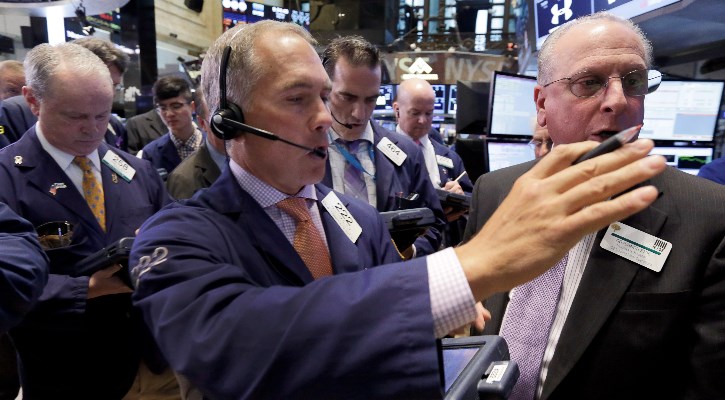 How Tesla's Market Value Skyrocketed
How Tesla's Market Value Skyrocketed
Our charts show why Tesla's influence in the marketplace is growing
 The US Economy is Cooling, and That's Good News
The US Economy is Cooling, and That's Good News
A soft landing is in sight. But could the economic slowdown go too far?
 When Will the Fed Start Cutting Interest Rates?
When Will the Fed Start Cutting Interest Rates?
Our latest economic forecast for US interest rates, inflation, and GDP growth
-
 Are FTSE Mining Companies Cheap Right Now?
Are FTSE Mining Companies Cheap Right Now?
Mining companies are operating in a challenging environment but could now be the time to top up o...
-
 Advice for George Osborne and Stock Market Regrets
Advice for George Osborne and Stock Market Regrets
THE WEEK: Morningstar columnist Rodney Hobson provides two pieces of advice to George Osborne, an...
-
 How to Find Solid Dividend-Paying Stocks
How to Find Solid Dividend-Paying Stocks
Businesses that have competitive advantages within their industry are good candidates for dividen...
-
 10 Top-Performing Funds in the UK
10 Top-Performing Funds in the UK
Morningstar reveals the top 10 best performers over the last five years
-
 Fund Research: Europe’s Shining Stars
Fund Research: Europe’s Shining Stars
Morningstar OBSR reveals the top funds for investors seeking exposure to European equities
-
 NatWest Shares Up as Profits Beat Expectations
NatWest Shares Up as Profits Beat Expectations
The bank also announced a deal with Metro Bank, raised its guidance, and increased its dividends
-
 After Earnings, Is Netflix Stock a Buy, a Sell, or Fairly Valued?
After Earnings, Is Netflix Stock a Buy, a Sell, or Fairly Valued?
With revenue growth, increased operating margins, but a high valuation, here’s what we think of N...
-
 Going into Earnings, is Apple Stock a Buy, Sell, or Hold?
Going into Earnings, is Apple Stock a Buy, Sell, or Hold?
We'll be watching iPhone revenue, gross margins, and services growth when Apple reports its earni...
-
 Unilever Earnings: Growth in a Challenging Market
Unilever Earnings: Growth in a Challenging Market
Despite growth, Morningstar's Fair Value Estimate for the consumer goods giant stock is unchanged
-
 AstraZeneca Earnings: Steady Outlook but Growth Could Slow
AstraZeneca Earnings: Steady Outlook but Growth Could Slow
Morningstar analysts think the UK's biggest company has a well-positioned broad drug portfolio wh...











 Since the start of the pandemic, however, wages have steadily increased overall, led by outsize earnings growth in hospitality as well as manufacturing, areas where job shortages have led to employers having to lift pay to attract new employees.
Since the start of the pandemic, however, wages have steadily increased overall, led by outsize earnings growth in hospitality as well as manufacturing, areas where job shortages have led to employers having to lift pay to attract new employees.








